Housing
Combination of housing and grazing land
In an integrated crop-livestock farming system, farmers can control to a certain extent what and how much the animals eat, where dung and urine are deposited and how the manure is utilised. Keeping cattle in a fenced area grazing can allow the targeted grazing and trampling of grasses and bushes. This can increase the regrowth of plants. The periodic keeping of cattle in a cattle enclosure/kraal/boma (e.g. during the night) enables controlled feeding, watering, protection and monitoring of the animals and the collection of manure and its spreading on arable land, which promotes productivity. If kraals/bomas are mobile they can be moved over crop- or rangeland to improve soils and vegetation/crops, omitting the need for labour and the movement of manure. To prevent overuse of grazing land (implementation of planned grazing) kraals are used to confine animals and hold them close together at night to guide them to the respective grazing areas during the day.
In organic and agroecological agriculture, animals should be able to express their natural behaviour. This means that cattle are not tethered, at least not the majority of the time. Instead, they should get the opportunity to experience social interactions with other cattle. When the climatic conditions allow, cattle should take up the majority of their feed by grazing. Cattle sheds are not necessary, but stabling can have some advantages. What proportions of time cattle spend in a shed, enclosure or kraal, and outside (on grassland or roaming freely), or whether an enclosure is necessary at all, depends on various factors:
- Land resources available: The number and breeds of animals on a farm should be adjusted to the size and type of land available for grazing, fodder production and cropland. This avoids overuse (insufficient regeneration of the vegetation which can lead to soil erosion) or underuse of grassland with the result of scrub encroachment, and over- or undersupply of nutrients to the soil.
- Season: The seasons, with their specific climatic conditions, affect growth and regrowth and thus the availability of grass, crops and crop by-products.
- Need for farmyard manure: Keeping cattle in a barn part- or full-time allows for the collection of the farmyard manure. Manure is an extremely valuable fertiliser with high nutrient contents. If composted, it can contribute to soil organic matter management. For more information about farmyard manure see section Farmyard manure.
Protection: A cattle shed can protect the animals from heat, sun, heavy rains, storms, theft and wild animals. Heat and other adverse weather conditions can negatively affect animal health, and can, together with predation, reduce the productivity of a herd.
Feeding/trampling: Keeping animals in a confined area (fenced or controlled by herders) allows control of where and what the animals eat and how they affect the soil. This can have positive impacts on grazing land (see chapter on Planned grazing). Keeping cattle confined regularly also has the advantage of more animal-human interactions and, therefore, possibly better animal-human relationships, which facilitate the administration of treatments (e.g. vaccination, castration) or animal inspections.
Milking: Depending on the milking system, the weather and climate and the number of animals, milking can be done outside or in parlors.
Cattle sheds
There are many different types of sheds/kraals or barns built from different materials. Basically, the following criteria can be used as a guide when building a new cattle shed or improving an existing one:
- Roof: Depending on the type of animals and the climate, a roof can be necessary or not. For beef cattle, a pen might be enough but for dairy cattle a roof will be important. In areas with higher rainfall a roof and walls help to prevent too much water from entering. In dry areas, a fenced area may be sufficient, but when temperatures are high, a roof can also provide some shade for the animals.
- Fresh air: The shed should always be supplied with plenty of fresh air. This can be ensured with the largest possible side openings. Small openings in the walls, however, can lead to draughts, which should be avoided.
- Space: If the shed is designed such that the cattle can move freely, the space should be large enough so that all animals can move and easily avoid conflicts. It should have no dead ends and all aisles should be at least as wide as three cows standing side by side.
- Floor: The floor should not be slippery. A slippery floor reduces the animals’ activity, which increases the risk of injury and makes it difficult to recognise oestrus.
- Light: Cattle see better in the dark than humans. Nevertheless, it is important that the shed is well lit by daylight. A lack of daylight can have a negative effect on a cow's fertility and milk production.
- Resting area: The shed or barn should offer space for all animals to lie down at the same time. Comfortable lying areas are important, because cows spend a large part of the day lying and chewing their cud. Therefore, the lying areas should be soft, dry and clean at all times. Soft, moisture-absorbing plant material such as straw, wood shavings or compost is suitable as bedding. To maintain cleanliness, either all soiled and wet bedding should be removed daily and fresh bedding added, or a fresh layer of litter is spread over the existing layer every day (deep litter) (this system will produce high quality composting material, which is very beneficial for crop production).
Knee test: is the lying area well-littered enough?
To check, whether the lying area is comfortable enough for the cows, stand on the lying surface and let yourself fall on your knees. If it hurts, litter depth is not sufficient.
- Separation: A separate area in the cattle shed for sick or heavily pregnant animals allows is useful as it allows the farmer to separate them from the herd. Separated individuals can be observed, cared for and treated more easily. The sick compartment should be within sight of the herd so that the isolated animal does not experience any additional stress.
- Feeding facility: An animal should also be able to eat in the barn in a natural posture (the same as when grazing). The feeding place should not be higher than a hand's width above the ground.
- Water: Watering troughs should always be clean and preferably have an open water surface. Regular access to water is essential for the health and productivity of cattle. In situations where the cattle have no water while grazing, they may come back thirsty, and all want to drink. A sufficient supply of water to quickly refill the drinking trough helps to avoid conflicts.
Visit different cattle sheds and discuss in groups the above-mentioned aspects:
- Are they built well?
- Discuss each aspect (air, space, floor, light, resting area, feeding facility, water). What could be improved?
- What are possible consequences of sub-optimal barns for animal health and productivity?
Manure management
Farmyard manure is a highly valuable source of nutrients to crops and can contribute to soil fertility. Cattle manure mixed with litter material, harvest residues and feed leftovers can be composted to make a highly valuable soil amendment.
Manure management includes the collection, storage, transport and application of manure.
| Collection |
|
| Dung heap & composting |
|
| Deep litter system |
|
| Transport |
|
| Application |
|
Dung cakes
Dung cakes are manually made patties created from manure and used as domestic fuel for cooking or heating. There are growing concerns about the environmental and health implications of this practice. The combustion of dung cakes can release pollutants and contribute to indoor air pollution.
Biodigesters
Manure can also be used in a biodigester. Biogas digesters transform manure and other organic materials such, as most foods and plant residues, into gas and bioslurry. The gas can be used as energy for cooking or other domestic uses, and bioslurry is another product that can be used as a fertilizer. Bioslurry is often even superior to farmyard manure. It usually has a more balanced nutrient composition compared to farmyard manure, and it contains nitrogen (N), phosphorus (P), potassium (K), and other micronutrients in forms that are more readily available to plants.
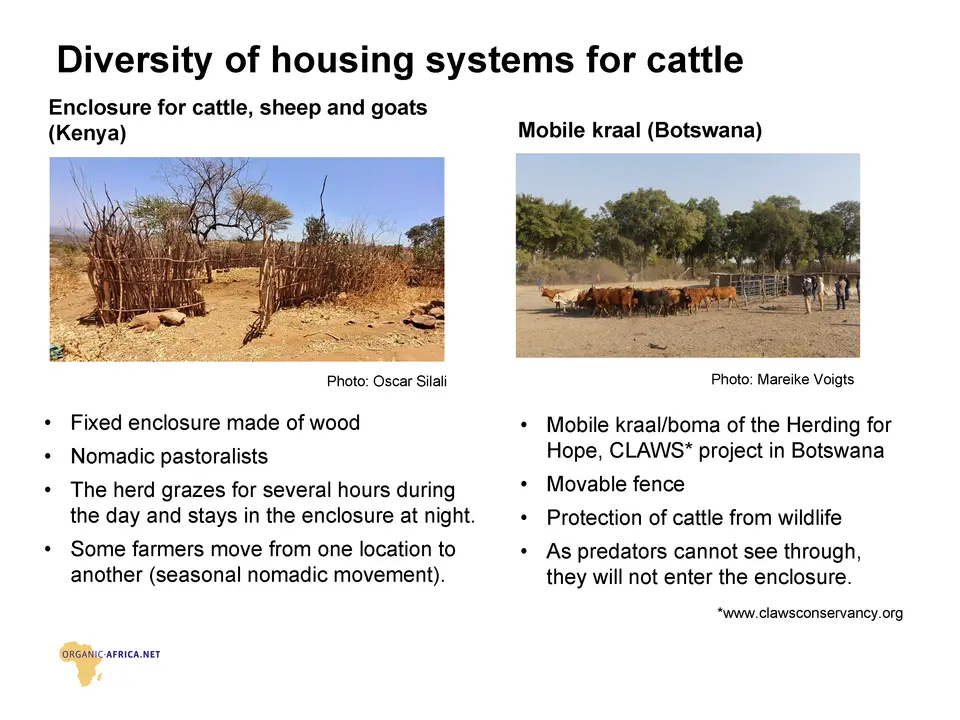
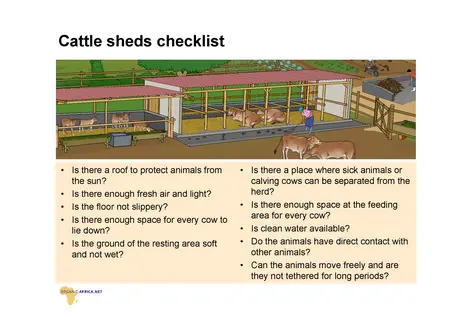
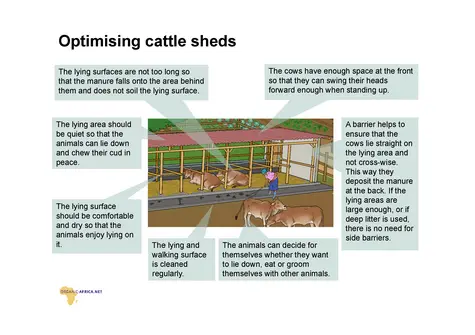
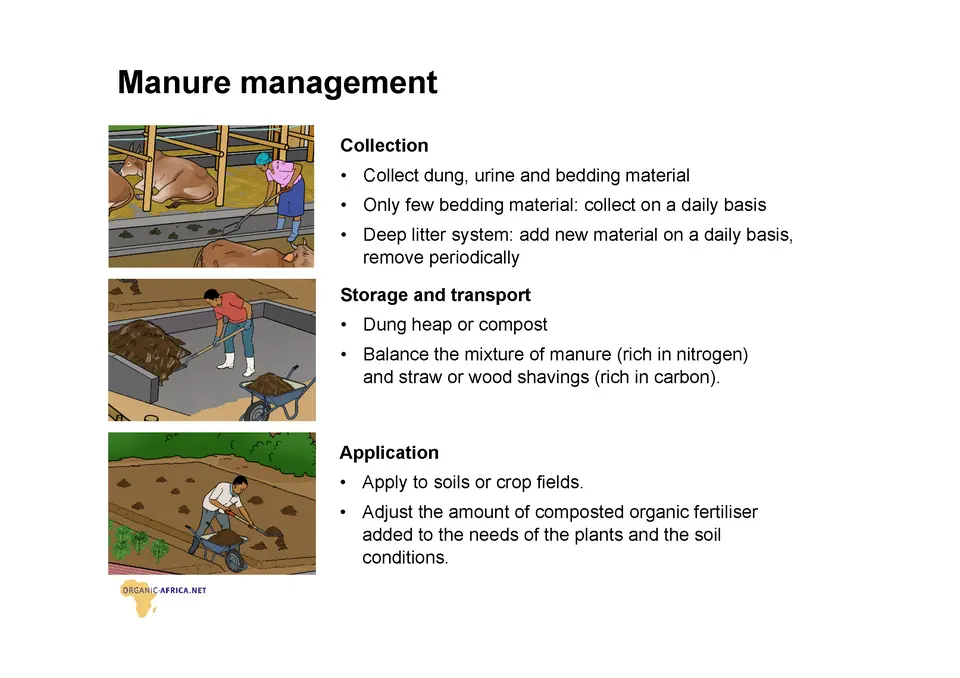
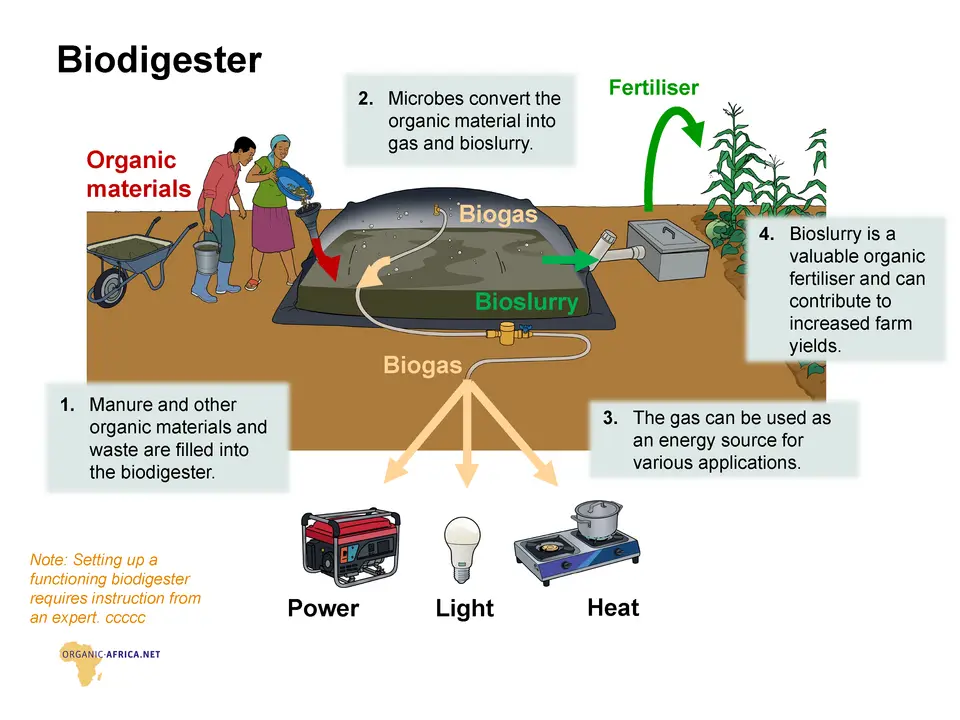
 tap and then scroll down to the Add to Home Screen command.
tap and then scroll down to the Add to Home Screen command.